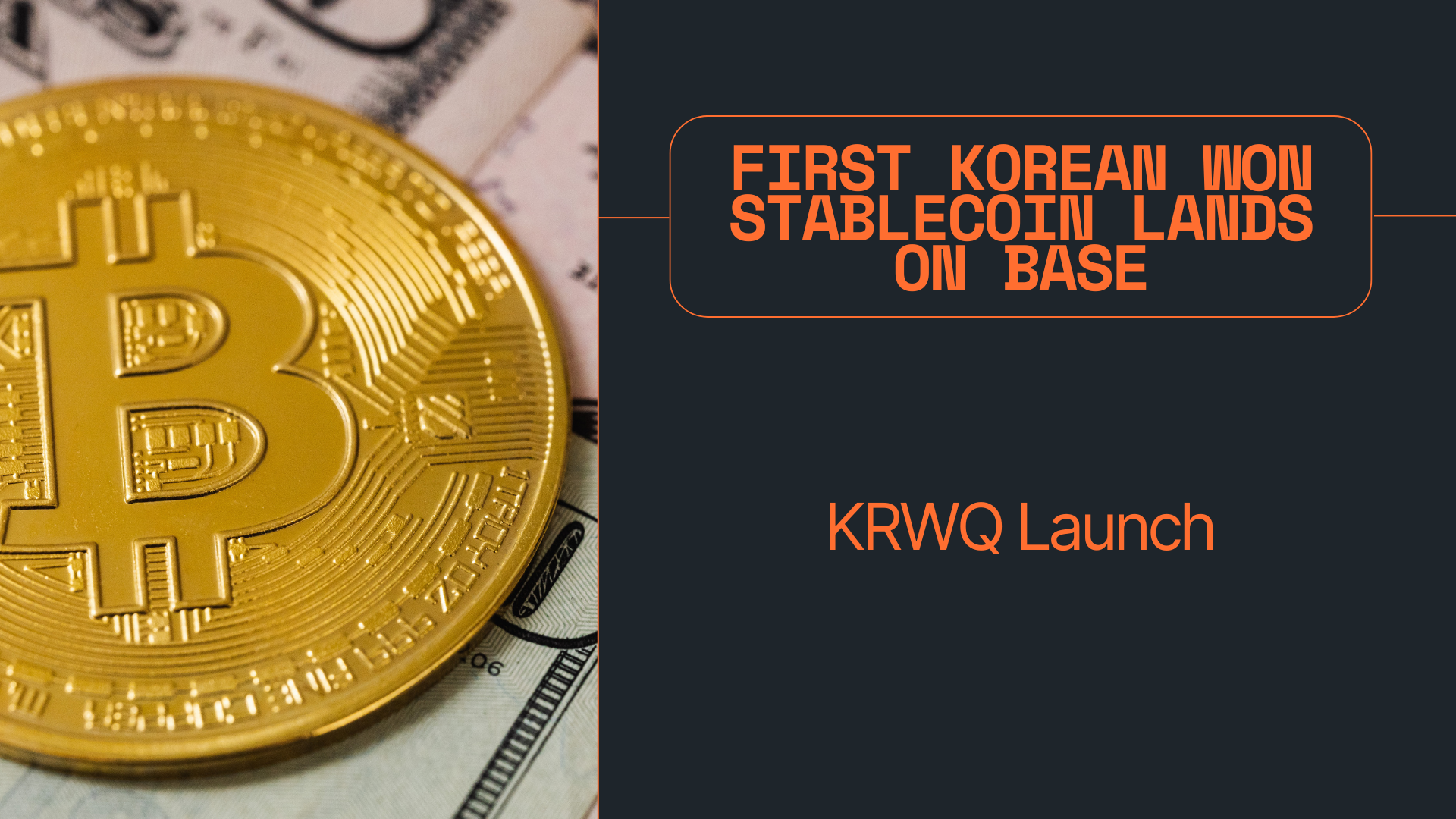
A new fiat-linked token just joined the Base network: KRWQ, a stablecoin pegged to the Korean won. The project is a collaboration between IQ and Frax, and it’s being billed as the first KRW-denominated stablecoin on Base, Coinbase’s Ethereum Layer-2 chain. A KRWQ–USDC pool is already live on Aerodrome, Base’s flagship DEX—small but telling infrastructure for price discovery and on-chain settlement.
What exactly launched—and why on Base?
KRWQ is described as a fully backed, won-pegged token designed for global DeFi use rather than domestic retail in Korea (for now). The choice of Base matters: the chain is an Ethereum L2 incubated by Coinbase, built on OP Stack, aiming for a low-cost, high-throughput developer environment with a growing DeFi footprint. Launching on Base gives a path to U.S.-exchange-adjacent liquidity, existing on-ramps, and an audience already transacting with dollar stablecoins.
How KRWQ moves across chains
Under the hood, KRWQ uses LayerZero’s Omnichain Fungible Token (OFT) standard. OFT enables a single supply of a token to teleport between supported chains by burn-and-mint messaging—no wrapped IOUs, no external liquidity pools required for the transfer itself. That matters for a cross-border stablecoin’s user experience: it can exist on Base, extend to other EVM chains, and still keep a unified ledger of supply.
Liquidity is the other half of the story. IQ and Frax seeded a KRWQ/USDC market on Aerodrome, giving traders a straightforward route to swap into or out of KRWQ and helping the peg hold near ₩1 per token via arbitrage. As liquidity deepens, spreads typically tighten—useful for anyone looking to exchange crypto against a won unit of account.
What you can—and can’t—do today
There’s a big caveat. KRWQ is not being offered to South Korean residents at launch. South Korea’s legislature and financial authorities are still working through a stablecoin law, and the project says it’s positioning KRWQ for a fully compliant path once the rules are final. For now, issuance and redemption are limited to authorized partners—exchanges, market makers, and institutions—while everyone else interacts through DEX liquidity.
That stance tracks with Seoul’s policy trajectory. Lawmakers have previewed a Digital Asset Basic Act and accompanying stablecoin bill that would license issuers and lay out reserve, disclosure, and conduct rules. The Bank of Korea has also flagged de-peg risks and urged safeguards—one reason many teams are taking a cautious distribution approach until the rulebook lands.
Why won stablecoin?
Dollar-denominated stablecoins dominate global crypto trading, but regional stablecoins can be powerful for FX rails, remittances, and local pricing in DeFi. KRWQ is entering that lane, aiming to serve funds and market makers that already think in KRW terms but want on-chain speed and composability. The timing also lines up with a wider Asia stablecoin push: just this week, Japan’s JPYC launched a yen-pegged stablecoin backed by domestic deposits and Japanese government bonds—a reminder that Asia’s stablecoin map is broadening beyond USD.
What to watch next
Liquidity on Aerodrome. Early depth and tight spreads in the KRWQ/USDC pool will be the best real-time indicator of market confidence. As TVL grows and routing improves, expect lower slippage for retail-sized orders and better pricing for programmatic traders.
Regulatory clarity in Korea. South Korea’s evolving framework—who can issue, how reserves must be held, and which agencies oversee what—will determine whether KRWQ can expand from “global DeFi only” to domestic access. Policymakers have telegraphed interest in licensing issuers and tightening AML around fiat-linked tokens; the BoK has raised FX-management concerns as well.
Multichain reach. Because KRWQ uses OFT, it can bridge beyond Base without creating fragmented supplies. That could matter for trading firms that operate across multiple EVM chains and need won exposure where they already post collateral or provide liquidity.
What this means for traders and builders
For traders, KRWQ introduces a new quote currency on Base. If you price risk or PnL in KRW, being able to swap between USDC and KRWQ directly on Aerodrome reduces mental FX gymnastics. It also opens the door to KRW-denominated perps funding, lending, or yield products—should protocols choose to list KRW pairs or accept KRWQ as collateral.
For builders, a won stablecoin on a low-fee L2 widens the design space: KRWQ-based payroll, cross-border commerce, or FX settlement modules that don’t detour through USD first. The OFT design also means interoperable integrations across chains can ship without babysitting wrapped assets.
Important risks (and how to trade smart)
- Peg mechanics. A fiat-backed stablecoin lives or dies on the quality and transparency of reserves plus reliable redemption. Until public attestation/reporting patterns form, expect tighter position sizing and more frequent price checks. (That advice holds for any new stablecoin.)
- Policy shifts. If South Korea’s final rules change issuance or redemption terms, access for certain users—or the economics for market makers—could move quickly. Watch for official updates as the bill advances.
- DEX execution. Early pools can have thin liquidity. Use limit orders where your interface supports them, set slippage prudently, and consider splitting orders.
- Interoperability assumptions. OFT simplifies cross-chain motion, but bridges and messaging still carry operational risk. Always verify official contract addresses and routes before you exchange crypto across chains.
The conclusion
KRWQ’s debut is another nudge toward a multi-currency stablecoin world. Whether it reaches meaningful scale will depend on a trifecta: (1) consistent reserves and redeemability, (2) growing on-chain liquidity, and (3) regulatory green lights in its home market. For now, KRWQ gives Base a fresh unit of account, gives arbitrage desks a new FX angle, and gives the rest of us a live test of how non-USD stablecoins might compete on major L2s.